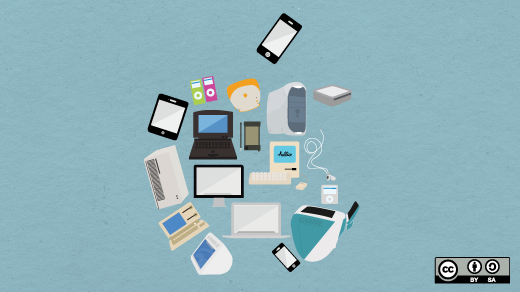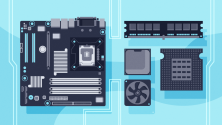The Internet of Things (IoT) is a fascinating development in the realm of computing. Connected smart devices, home automation, and related areas of development are producing many interesting projects. Opensource.com's writers shared their expertise about a variety of Internet of Things projects many times during 2021. Here are Opensource.com's ten best Internet of Things articles from the year.
How to customize your voice assistant with the voice of your choice
Learn about the Nana and Poppy project in this article by Rich Lucente. The Nana and Poppy project is Rich Lucente's open source project for creating custom greetings for artificial intelligence voice assistants. He describes the entire process, from recording the necessary audio clips to writing the code to combine the clips into a complete greeting. The finished product was five custom voice assistants gifted to great grandparents and grandparents who could now hear their grandchildren's voices whenever they interacted with the voice assistant.
Monitor your home's temperature and humidity with Raspberry Pis and Prometheus
Chris Collins describes how he used Prometheus to monitor his home's temperature and humidity. He provides detailed instructions about installing Prometheus on Raspberry Pi OS, instrumenting a Prometheus application, setting up a systemd unit and logging, and more to create a tool for monitoring temperature and humidity data. This article builds on an earlier article written by Chris, which is the next article on this list.
Set up temperature sensors in your home with a Raspberry Pi
Learn how to set up temperature sensors using a Raspberry Pi, a DHT22 digital sensor, and some Python code. In this article, Chris Collins explains how to connect the sensor to the Raspberry Pi, install the DHT sensor software, and get the sensor data using a Python script. He concludes by teasing a future article that will do more to automate the data collection from this device, which is the previous article on this list.
Control your Raspberry Pi remotely with your smartphone
Stephan Avenwedde explains how to use your smartphone to control the GPIOs on a Raspberry Pi. This tutorial describes how to install and use Pythonic to make the Raspberry Pi controllable over a network connection using Telegram. There was no specific end project in mind when he wrote the article, so it provides broad instructions that you can apply to many projects. Some possible projects suggested by Stephan include lawn irrigation and a garage door opener.
Why choose open source for your home automation project
Alan Smithee introduces the Opensource.com Home Automation eBook in this article. The eBook contains a selection of Opensource.com content related to home automation. Alan's article provides an overview of why technology makes things better for everyone and provides a link to download the eBook.
Monitor your Raspberry Pi with Grafana Cloud
Discover how to monitor your Raspberry Pi with Grafana Cloud in this tutorial by Matthew Helmke. This project uses a Raspberry Pi, the Prometheus time-series database, and a Grafana Cloud account. Matthew explains how to install Prometheus on the Raspberry Pi and connect it to Grafana Cloud to provide monitoring for your Raspberry Pi.
A new open source operating system for embedded systems
Zhu Tianlong provides an introduction to the RT-Thread Smart operating system. The article explains what RT-Thread Smart is, who might need to use it, and how it works. There is also a section in the article that compares and contrasts between RT-Thread Smart and RT-Thread.
Use Rust for embedded development
This article, authored by Alan Smithee and provided by Liu Kang, introduces using Rust for embedded development. This code-heavy tutorial shows how to call Rust in C and how to call C in Rust. There are plenty of code examples and detailed instructions for using Rust tools, like Cargo, for development.
Getting started with edge development on Linux using open source
Daniel Oh explains how to use the Quarkus cloud-native Java framework to get started with edge development. Daniel starts by providing a brief introduction to CentOS Stream, the operating system he uses for his tutorial. He then covers the three main steps of his tutorial:
- Sending IoT data to the lightweight message broker
- Processing reactive data streams with Quarkus
- Monitoring the real-time data channel
What is fog computing?
You have probably heard about cloud computing, but what is fog computing? Seth Kenlon describes fog computing as the "outer 'edge' of the cloud"—built up of all the connected devices like phones, watches, and various other things that comprise the Internet of Things.






Comments are closed.